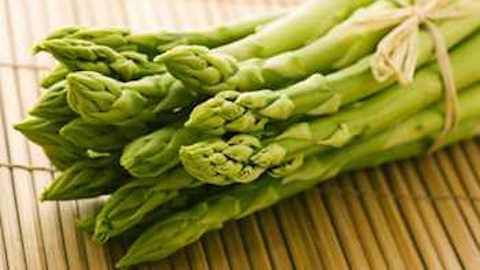- MENU
- HOME
- SEARCH
- WORLD
- MAIN
- AFRICA
- ASIA
- BALKANS
- EUROPE
- LATIN AMERICA
- MIDDLE EAST
- United Kingdom
- United States
- Argentina
- Australia
- Austria
- Benelux
- Brazil
- Canada
- China
- France
- Germany
- Greece
- Hungary
- India
- Indonesia
- Ireland
- Israel
- Italy
- Japan
- Korea
- Mexico
- New Zealand
- Pakistan
- Philippines
- Poland
- Russia
- South Africa
- Spain
- Taiwan
- Turkey
- USA
- BUSINESS
- WEALTH
- STOCKS
- TECH
- HEALTH
- LIFESTYLE
- ENTERTAINMENT
- SPORTS
- RSS
- iHaveNet.com: Recipes
by Emma Christensen

Asparagus is a nutrient-rich, versatile vegetable that can be prepared in many delicious ways. Whether you're roasting, steaming, or grilling, properly selecting, cleaning, and preparing asparagus ensures the best texture and flavor.
How to Buy Fresh Asparagus
Look for asparagus that is plump and straight. Check out the ends and put back any bunches with dry, split or excessively woody stems, as this is a sign of older asparagus. Thick or thin asparagus is really a matter of personal taste: thin spears are more tender and sweet, while fatter stems have a meatier texture and stronger asparagus flavor.
Store asparagus in the refrigerator in a loose plastic grocery bag. Use it within a few days of buying.
Look for bright green stalks with tightly closed, compact tips.
Check the stems -- they should be firm and crisp, not limp or wrinkled.
Size matters—thinner stalks are more tender, while thicker stalks have a heartier texture.
Avoid asparagus with mushy tips or dried-out ends.
How to Clean Asparagus
Rinse the spears under cool water to remove any grit. Snap off the bottom inch or so using your fingers; the stems will naturally break where the tough woody part ends and the tender stem begins. Dry the spears by rolling them between two kitchen towels. You can leave the spears whole or cut them into smaller bite-sized pieces for a stir-fry or other preparation.
Really thick asparagus can sometimes develop a tough outer skin. It's not strictly necessary, but you can peel this coating away with a vegetable peeler.
Best Ways to Cook Asparagus
My personal favorite way to prepare asparagus is to coat it with a little olive oil, sprinkle it with salt, and roast it in the oven or under the broiler until the outside picks up some browned crispy bits. I could -- and have -- eaten an entire bunch at once when cooked this way!
You can also steam asparagus spears or poach them in salted boiling water. When you get tired of eating asparagus on its own, you can throw bite-sized pieces in a stir-fry, a frittata or a pasta sauce.
However you choose to prepare it, asparagus is done when it's tender and still has a slight bite to it. Undercooked asparagus will be difficult to chew, and overcooked asparagus will taste mushy. You can pierce the spears with a fork or skewer to gauge how cooked they are, but the best way to test them is to just bite into one!
Asparagus can be prepared in multiple ways, depending on your preference:
Roasted Asparagus – Toss with olive oil, salt, and pepper; roast at 400°F (200°C) for 10-12 minutes.
Steamed Asparagus – Steam for 3-5 minutes until tender but still crisp.
Sautéed Asparagus – Cook in a pan with butter or olive oil for 5-7 minutes.
Grilled Asparagus – Brush with oil and grill over medium heat for 6-8 minutes.
Why Eat Asparagus?
Asparagus is low in calories and high in fiber, folate, and vitamins A, C, and K. It also supports digestion, heart health, and detoxification while being a delicious addition to any meal! 💚
Subscribe to Receive our Gourmet Recipes
FOOD, DRINK & RECIPES [...]
APPETIZERS | SOUPS | PASTA | SALADS | MAIN COURSES | SEAFOOD | CHICKEN | PORK | LAMB | BEEF / VEAL | VEGETARIAN | SIDE DISHES | DESSERT | HEALTHY | WOLFGANG PUCK
Asparagus: How to Buy, Clean, and Prepare Asparagus | Cooking Tips
Learn how to buy, clean, and prepare asparagus with this ultimate guide. Get expert tips on choosing fresh asparagus, proper cleaning techniques, and best cooking methods.
Article: Copyright © Tribune Media Services, Inc.